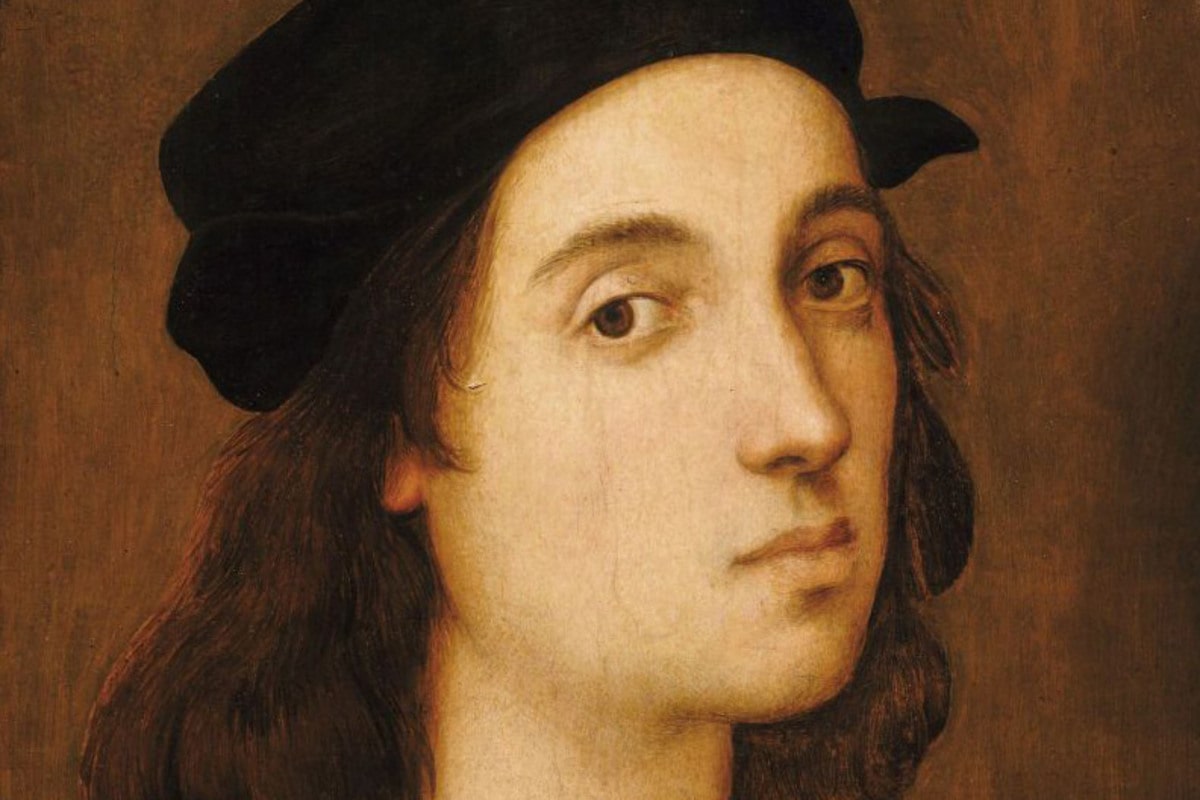Raphael Santi was one of the greatest masters of the Renaissance, whose work had a profound influence on the development of world art. His paintings are famous for their harmony, refinement, and exceptional sense of beauty, making them masterpieces for all time. In his short life, Raphael managed to create hundreds of paintings, frescoes, and architectural projects, leaving behind a legacy that continues to inspire awe today. In this article, you will discover interesting facts, incredible facts, and captivating facts that reveal his life and art from unique perspectives.
- Raphael was born in 1483 in the city of Urbino, which at that time was an important cultural center of Italy. His father, Giovanni Santi, was a court painter, which gave the future genius the chance to become familiar with art from an early age. The creative atmosphere in the family helped him develop his skills quickly. By his teenage years, he was already painting works that impressed those around him.
- Raphael’s first teacher was his father, but after his death he continued his studies with the famous painter Pietro Perugino. The influence of his master is evident in Raphael’s early works, especially in their balanced compositions. Over time, however, he developed his own style, which became his hallmark. This style combined classical balance with emotional expressiveness.
- Raphael became especially renowned for his depictions of Madonnas. His numerous versions of the Virgin Mary became a standard of tenderness and maternal love. These paintings were characterized by clarity of form, bright coloring, and a unique warmth. They had a major impact on religious art across Europe.
- One of Raphael’s most famous works is the fresco The School of Athens in the Vatican. It depicts great philosophers and thinkers of antiquity gathered in one space. The central figures of Plato and Aristotle symbolize different approaches to understanding the world. This masterpiece became the embodiment of Renaissance ideals of harmony and wisdom.
- Raphael was not only a painter but also an architect. After the death of Bramante, he became the chief architect of the construction of St. Peter’s Basilica in Rome. Although he did not live to see the project completed, his ideas influenced its further development. He also designed palaces and villas for the Roman elite.
- Unlike some other geniuses of his time, Raphael was known for his kind and amiable character. His contemporaries often emphasized his gentle nature, which distinguished him from the more temperamental Leonardo da Vinci and Michelangelo. This trait earned him many friends and patrons. His ability to build good relationships helped him secure the trust of papal clients.
- Pope Julius II invited Raphael to Rome to decorate his apartments in the Vatican Palace. It was there that the artist created his most famous frescoes, including The School of Athens and The Disputation. These works became models of monumental painting. They also solidified his reputation as the leading painter of the papal court.
- Raphael was one of the first artists whose works were actively collected during his lifetime. Many of his paintings were immediately purchased by European rulers and cardinals. His fame quickly spread across Italy and beyond. This made him one of the most respected artists of his era.
- He had many pupils and followers who carried on his tradition. Raphael’s school became one of the most influential in Rome and Florence. His students often assisted him in executing major projects. This collaboration allowed him to complete large commissions more efficiently.
- Raphael also had an interest in archaeology. He studied the ruins of ancient Rome and was even appointed papal commissioner for the preservation of antiquities. He believed that ancient heritage should be preserved for future generations. His approach was considered innovative for his time.
- Despite his short life, Raphael left behind more than 300 paintings and frescoes. His art had an enormous impact on the development of European culture. Artists of later generations learned from him the principles of harmony and perfection. His legacy became the foundation of academic art.
- Raphael died in 1520 at the age of only 37. His sudden death shocked his contemporaries. He was buried in the Pantheon in Rome, which was considered a great honor even then. The inscription on his tomb emphasizes the greatness of the master.
- Raphael’s portraits are notable for their depth and insight. He could capture not only a person’s appearance but also their character. His portraits of popes, cardinals, and aristocrats became valuable historical records of the time. They allow us to feel the spirit of 16th-century Italy.
- Some of Raphael’s works have survived only in the form of sketches. Even so, these drawings reveal his mastery. They show his ability to think compositionally and to convey movement. Many of them are now preserved in the Louvre, the Uffizi, and the British Museum.
- Raphael created one of the most famous altarpieces, the Sistine Madonna. The painting is known not only for the image of the Virgin Mary but also for the two small angels at the bottom. These angels became some of the most recognizable motifs in world culture. Their images are still widely reproduced on souvenirs.
- His work inspired many writers and poets. Giorgio Vasari and other Renaissance biographers wrote about him. Later, 19th-century romantics also turned to his legacy. He became a symbol of the brilliant artist who united beauty and harmony.
Raphael Santi left behind a legacy that continues to fascinate the world. Interesting facts about him show that his life was not only bright but also remarkably productive. Incredible facts highlight the scale of his influence on art, architecture, and culture. Captivating facts prove that even in a short lifetime one can create masterpieces that endure for centuries as eternal symbols of harmony.





